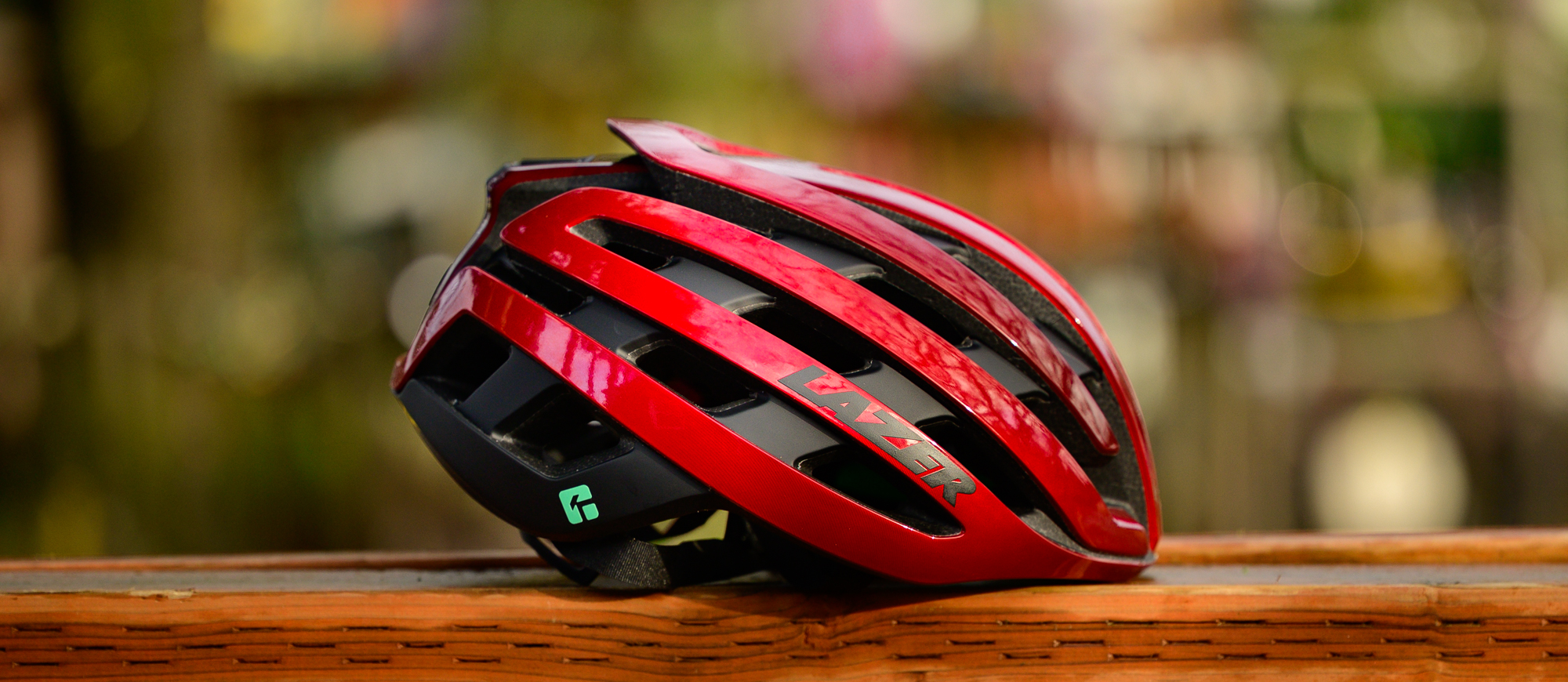Cyclingnews Verdict
The headline feature of the new Lazer Z1 is Kineticore but, in use, that's not an important purchasing metric. Kineticore makes sense but MIPS has options that can work just as well. More interestingly, the Lazer Z1 Kineticore is impressively light. If that's important to you, the rest of the Z1 is capable enough to let weight be a determining factor.
Pros
- +
Lightweight
- +
Highly ventilated
- +
Floating forehead padding
- +
Excellent system for extra strap length
- +
Kineticore does a good job with airflow
- +
5-star Virginia Tech rating
- +
Available Aeroshell is good for rain
Cons
- -
Not much room for long hair in the back
- -
Rollsys retention system is unnecessarily complicated
You can trust Cyclingnews
Price: £229.99 / $279.99 / €249,99
Available colours: White, Matte Black, Cosmic Blue, Harbor Grey, Metallic Red, Flash Orange
Rotational Impact technology: Kineticore
Weight: 226g as measured in size S
Because of my work on the best road bike helmets buyers guide, I look at a lot of helmets. As that volume of options passes through my hands, one of the things that's obvious is how stratified modern road bike helmets are. Unlike the UCI's limit on bike weight, there's no lower weight limit for helmets and each brand is welcome to innovate in whatever way makes sense. At the top of the range, some go for aero, others go for lightweight ventilation.
In this case, the Lazer Z1 helmet is the brand's premier climber's helmet. It sits alongside the aero focused Vento Kineticore in the lineup but so far the Vento has had something the Z1 hasn't. Even though the Vento has been out since 2022, and we've seen a number of lower spec Lazer helmets get it, only now is the Z1 getting the Kineticore treatment. Kineticore isn't the only change though and the latest Z1 is coming to market as one of the lightest, if not the lightest, road bike helmets available.
If your preference for helmets is light and airy, the Z1 might be just what you are looking for. Keep reading to see my experience with the Z1 and decide if it's time for a new lightweight helmet for your summer, or even winter, riding.

Design and aesthetics
As I worked on the news article covering the launch of this new helmet, I spent a considerable amount of time trying to figure out what is new and what is not. The most obvious difference is on the inside of the new Lazer Z1 Kineticore. It's there where things start with a switch away from the well-known MIPS rotational impact technology to Lazer's own proprietary Kineticore system.
While modern MIPS technologies have come a long way, the Lazer Z1 MIPS was new back in 2020. The MIPS the helmet was using came from a time when MIPS meant a layer between the hard foam and the padding that covered the entire helmet. Although the end result of creating a slip plane that allows a helmet to shift around your head in a crash hasn't changed, the older style wasn't universally loved. Some people didn't notice it much but others rightly pointed out that it made helmets hold heat and could catch on long hair. Instead of jumping to a modern version though, Lazer developed its own solution, which it launched in 2022, and it's now available in the Z1.
Kineticore accomplishes the same thing as MIPS but there's no extra layer. Instead, the EPS (expanded polystyrene) has blocks of foam with large channels between them moulded directly into its structure. The idea is that in the event of a crash, the EPS blocks will break and deform. As that happens it will both absorb energy and allow your head to rotate inside of the helmet as needed.
Of course, the switch from MIPS to Kineticore also means a necessary reimagining of the padding system used with the new Lazer Z1 Kineticore. The previous version consisted of only a front brow pad and a simple "Y" shaped rear pad at the top of the head. The latest version uses a more sophisticated design that's similar to what you can find in the Vento Kineticore. There are a pair of padding strips along the upper side of your head plus a central "U" shaped pad that extends front to rear. Compared to the Vento, the padding is much thinner but both helmets share a floating front pad.
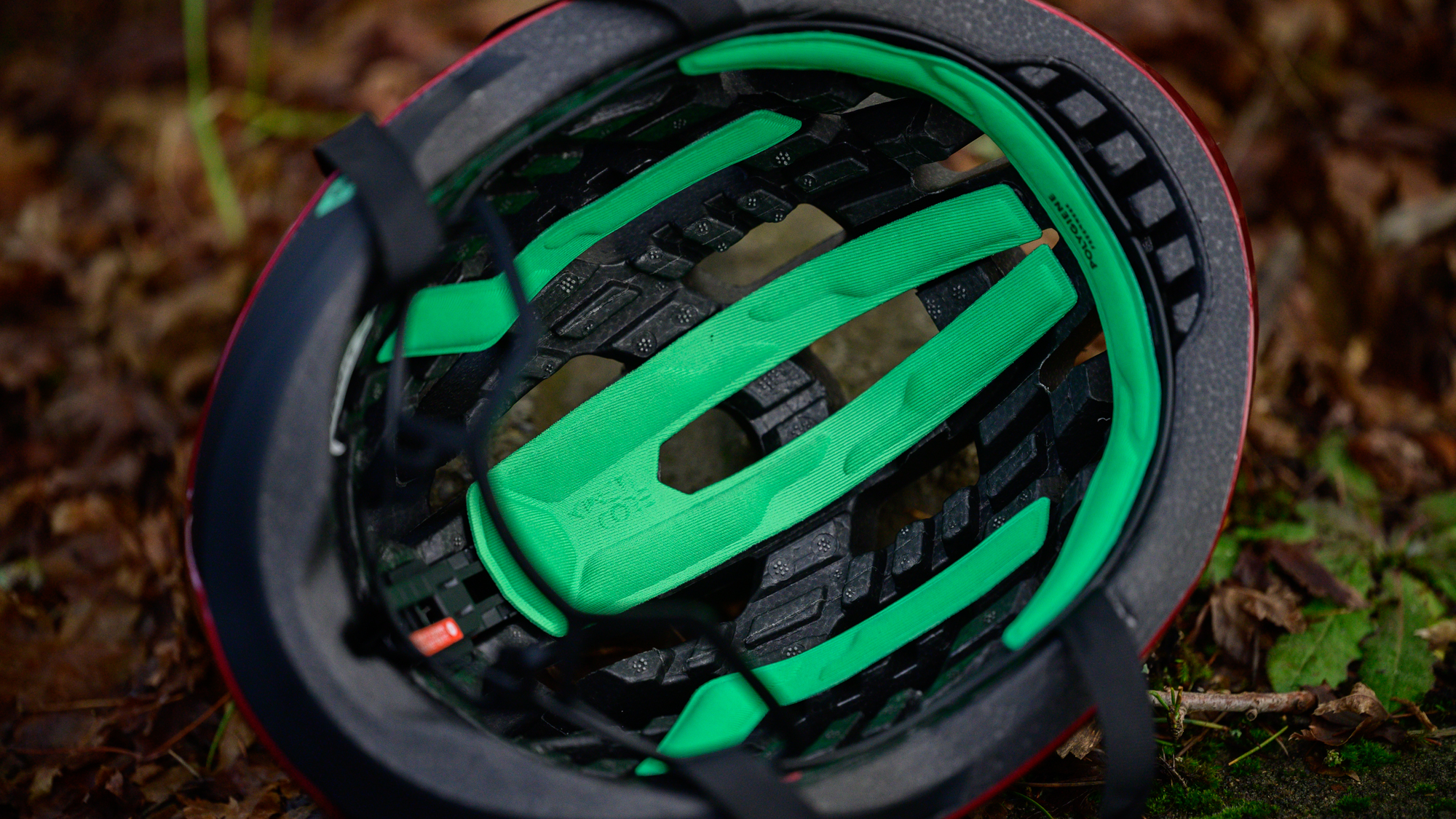

The design of the front pad is indicative of how all the various designs come together as a whole. For example, a floating front pad allows airflow to help dry it out when it's soaked with sweat but there has to be something behind it. In this case Lazer relies on the inherent airflow advantage of Kineticore. Instead of a solid section of EPS, you will find six Kineticore blocks arranged to allow airflow but also absorb energy at the brow. The other layer of material between the padding and the EPS is yet another example of the deep integration of technologies.
Directly behind the floating front pad you'll find part of the Lazer Advanced RollSys design. Instead of a rear cradle that floats separate from the rest of the helmet and features a dial at the rear, Lazer integrates the whole retention system. The rear cradle has no direct adjuster but a Rollsys dial sits on the top of the helmet and when tightened it pulls on a pair of thick plastic 'lines.' Those lines thread through the rear cradle before expanding into a flat piece that sits behind the front pad. Tightening Rollsys pulls from the front of the helmet and only tightens the rear cradle by proxy. There's still also a vertical adjustment of the rear cradle that is separate.
While Rollsys isn't a new concept, this version of the Z1 does get an updated version. The dial has moved rearward and the worm gear that powers the system is now enclosed and protected. It looks to be both an aero improvement and a reliability upgrade though Lazer doesn't make any claims on either front. In fact, it's worth noting that unlike the Giro Aries, the only aero claim Lazer makes is that the helmet is "keeping aerodynamics in mind."
For those who aerodynamics is of the utmost importance, there are instead accessories to consider. As before Lazer will have an Aeroshell available that works with the new Z1. There's still no specific aero claim but given that it covers most of the venting it has to help, right? Thankfully it's inexpensive enough that it certainly won't hurt if you want to pick it up only for race day. The rest of the time you can instead use it for rainy rides and there is also the Universal LED accessory that mounts at the rear and adds visibility for those same rainy rides.
On the outside of the Z1 Kineticore there are also changes compared to the previous version but they are far more subtle. Lazer references a "new aggressive design" but spotting the differences in the White, Matte Black, Cosmic Blue, Harbor Grey, Metallic Red, or Flash Orange exterior will take an eagle eye. There are actually a number of small changes to the details but it's not clear if there's a specific reason behind anything outside of the moved Rollsys dial. The overall profile remains almost the same.

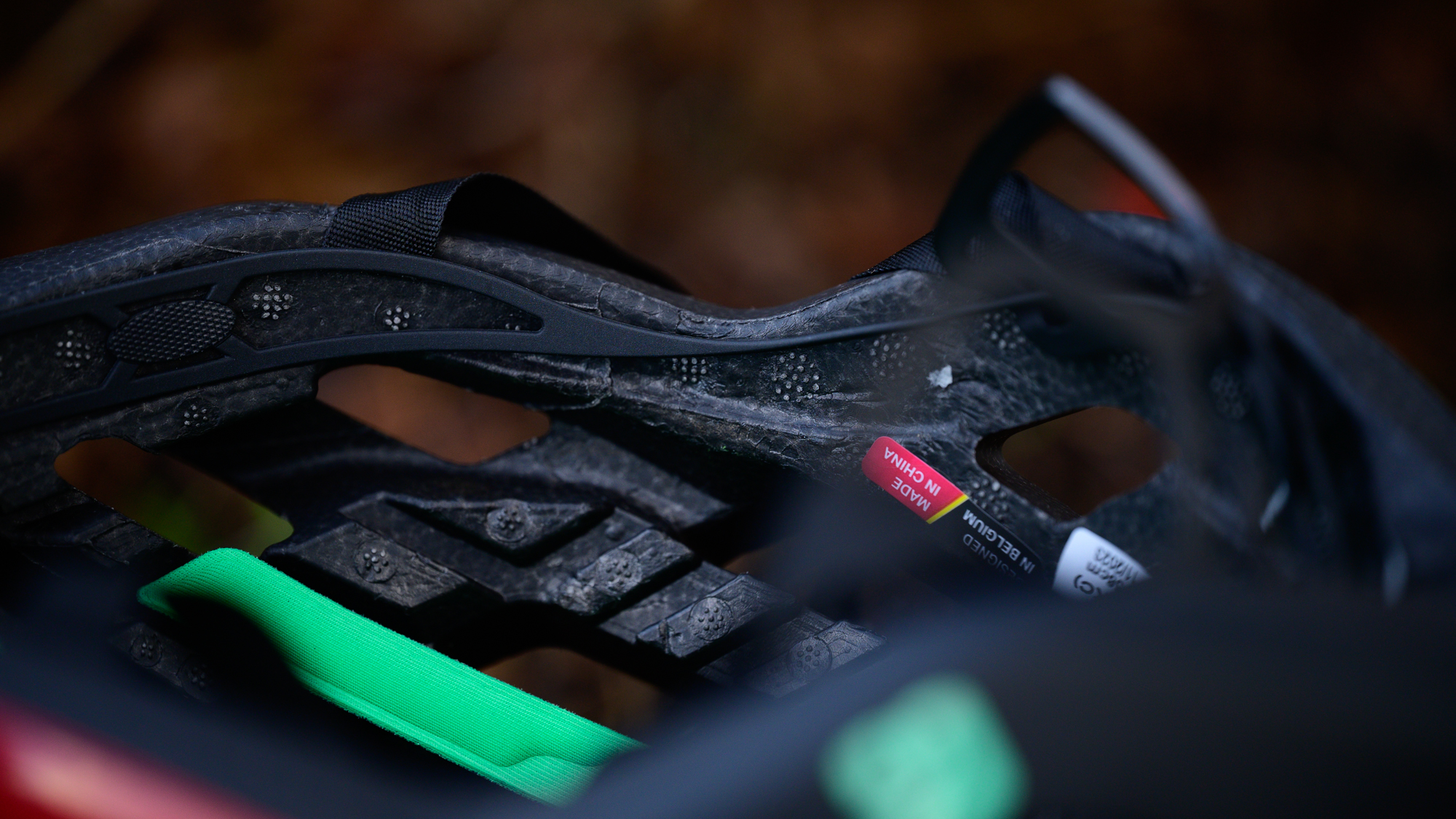
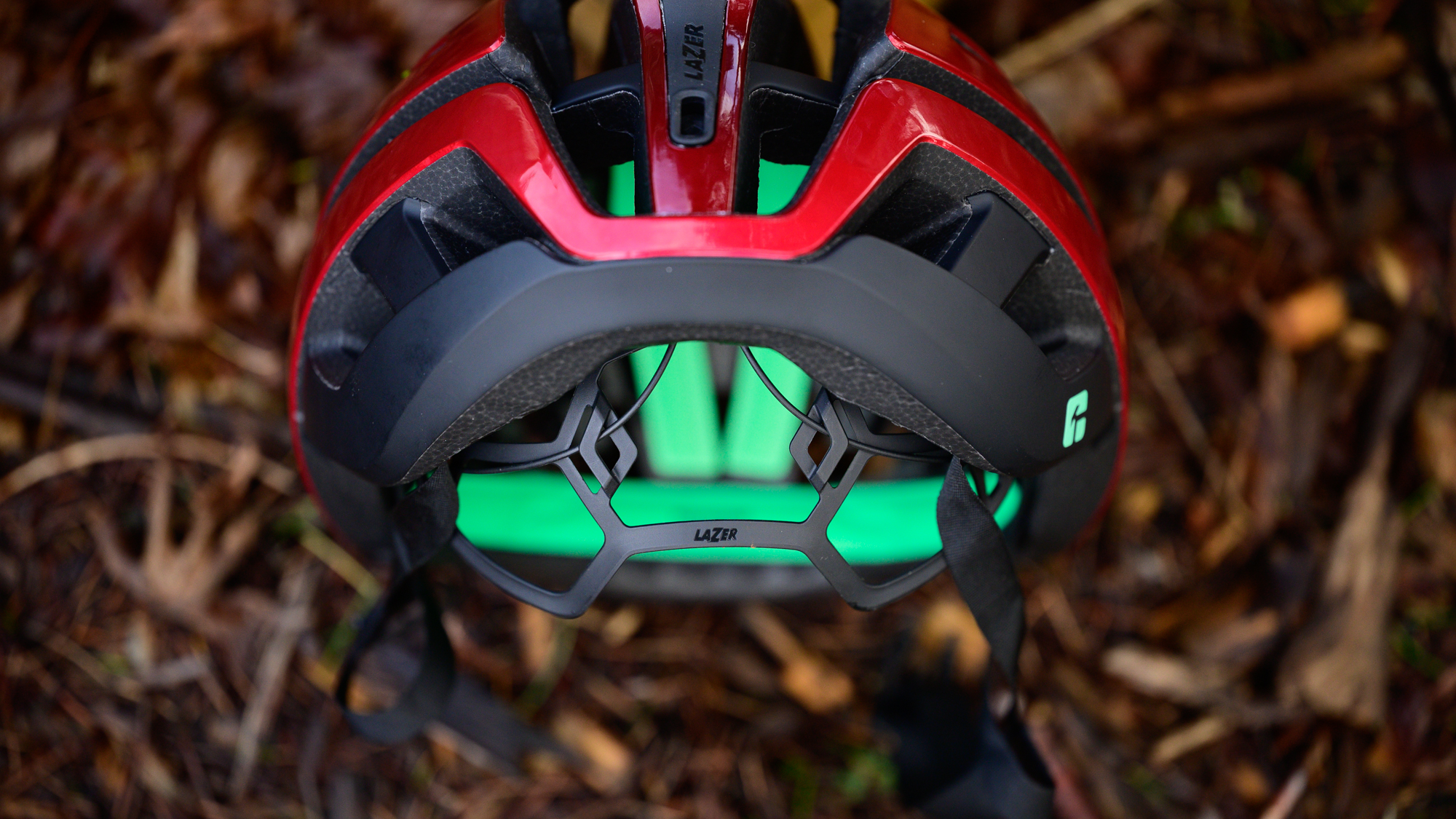
Performance
Anyone who knows me will tell you that I'm all about aero performance. I might not be the fastest but I'm willing to ride farther. Sunup to sundown is just a start and if you float me a good reason to ride through the night, I'm in. When the distances stretch out like that, every little efficiency matters and given the massive effect of an aero helmet it only makes sense. The Lazer Z1 Kineticore throws a wrench into that calculation though.
With a claimed weight of 220 grams for size small (my review sample weighed 226 grams) Lazer is offering a different kind of efficiency and it's noticeable. After 16 hours on a race bike I'll take anything you offer me that reduces the strain on my neck. With a 27 gram advantage over the next lightest helmet I've tested, the Z1 is one such advantage. You don't have to ride for that long though, as soon as you put on the Z1 Kineticore it's noticeably light. Even beyond the actual number on the scale, the choices Lazer made to get there are also advantages.
MIPS is not a heavy technology. Eliminating MIPS is not how the Lazer Z1 Kinticore slims down and if you compare the previous weight to the current weight, the two are virtually identical. Actually, it would seem that the new version is slightly heavier and getting the Z1 Kineticore down to the quoted weight took some work. Notably that work came in the straps.
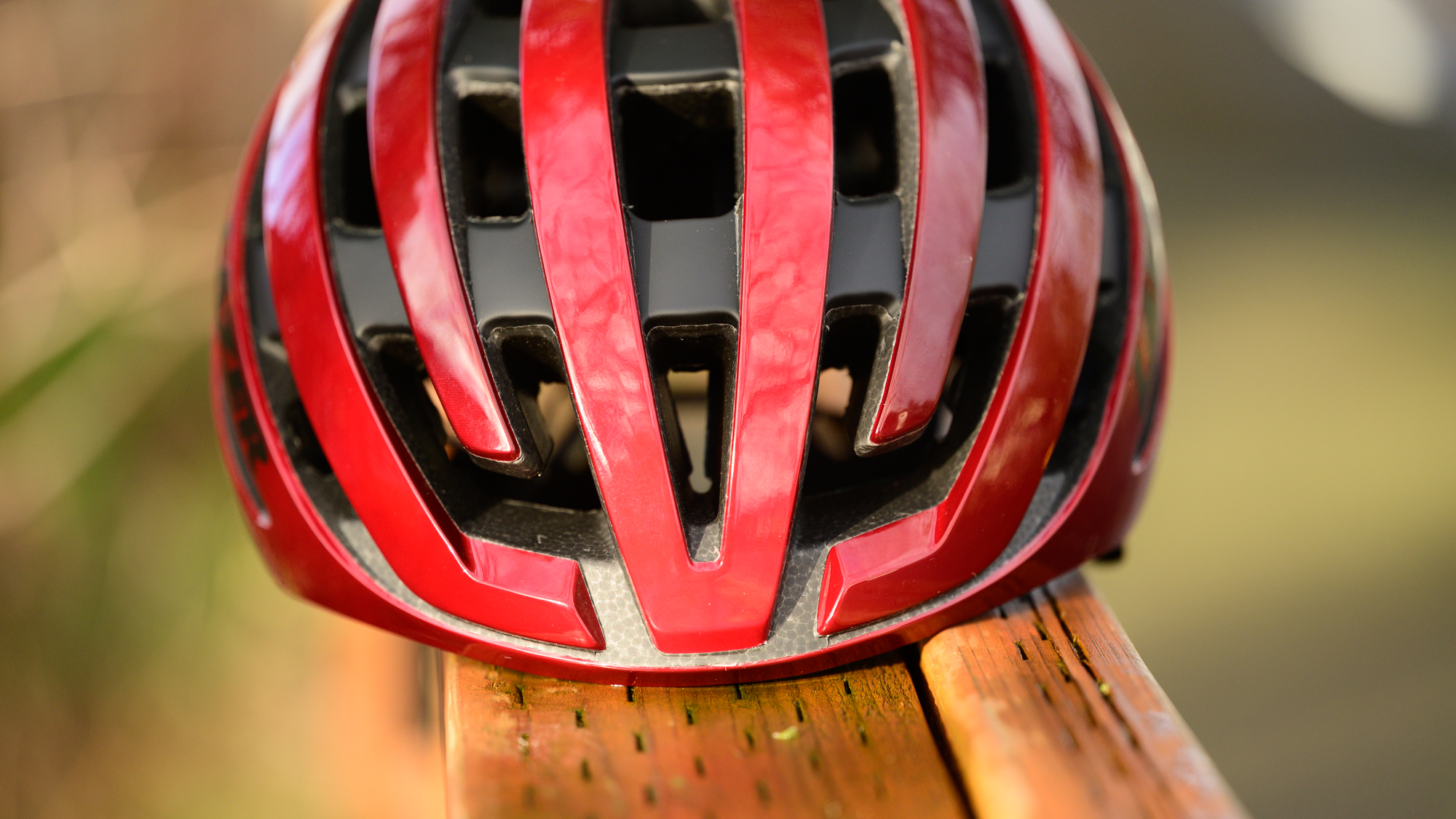
The Lazer Z1 uses lighter straps with less material and no hard plastic strap divider. Does it massively change the weight of the helmet? Of course not, we are splitting hairs here but that's the nature of saving a few grams. There are other advantages too though.
The new Z1 straps sit just right on the side of my face. There's no bunched material, there are no gaps, and the extra material for adjustment stays just as flat and tidy. You can't adjust the strap position under your chin but, at least for me, it's perfect and I don't need to.
It's not just me that benefits from the new straps either. While I'm concerned with efficiency, so is Lazer as a manufacturer. Less material used is always an environmental benefit and Lazer leans into that with a percentage of recycled content. Unfortunately, the brand doesn't mention how much so I'm going to assume it's not a huge amount. Still, I think it's a positive.
The Lazer Z1 feature I am less in love with is the Rollsys design. I suspect the design is part of the Lazer DNA (a variation exists on the Vento also) at this point and it's seen as a product differentiator. Unfortunately while differentiation is good, I see no real benefit to the end user. Lazer mentions that it makes more room for long hair in the rear except the rear cradle doesn't have a generous amount of room in the rear. Trek, for example, uses a BOA dial and has significantly more room for hair in the rear cradle. Lazer also talks about how the design of Rollsys creates a 360-degree tightening system. Except POC has a similar system, with a similar amount of room for hair, and doesn't make you rethink how you tighten a helmet.
Despite those issues, my biggest issue with Rollsys isn't a real problem. What I mean is that it's more conceptual. What makes the Lazer Z1 Kineticore fantastic is how light it is, and that feature overshadows everything else. Lazer claims the ventilation with the Z1 is actually 3% superior to not wearing a helmet at all but it's hardly noticeable compared to other airy helmets. There is also a five-star Virginia Tech rating but other helmets match that too. What makes the helmet a pleasure to wear is that it's the lightest and I find it hard to believe that Rollsys is lighter than a rear dial system. If it's worth shaving grams by using lighter straps, shouldn't it also be worth getting rid of an overly complex dial on top of the helmet? I want to see what Lazer can do without holding on to a legacy design.
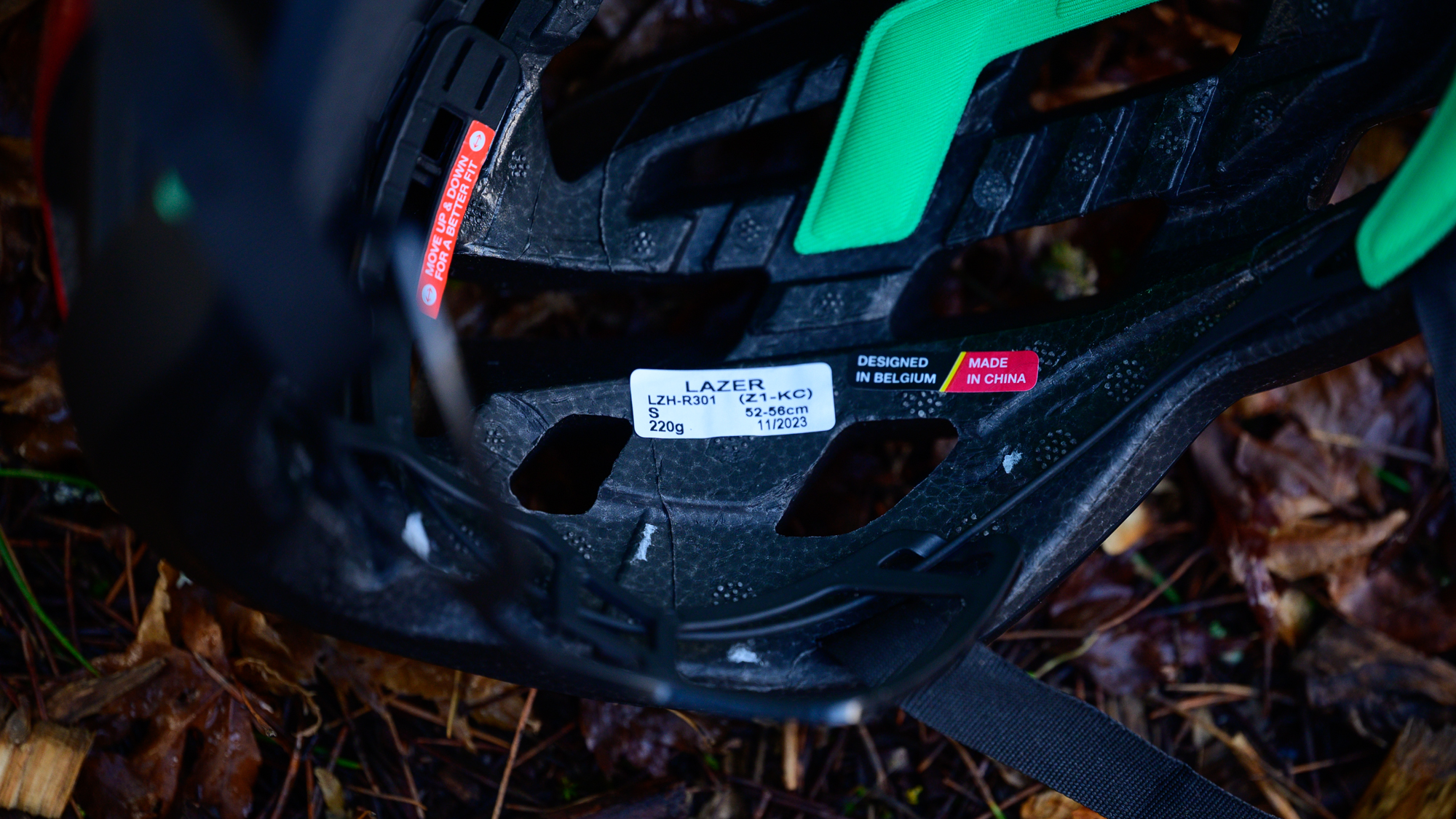
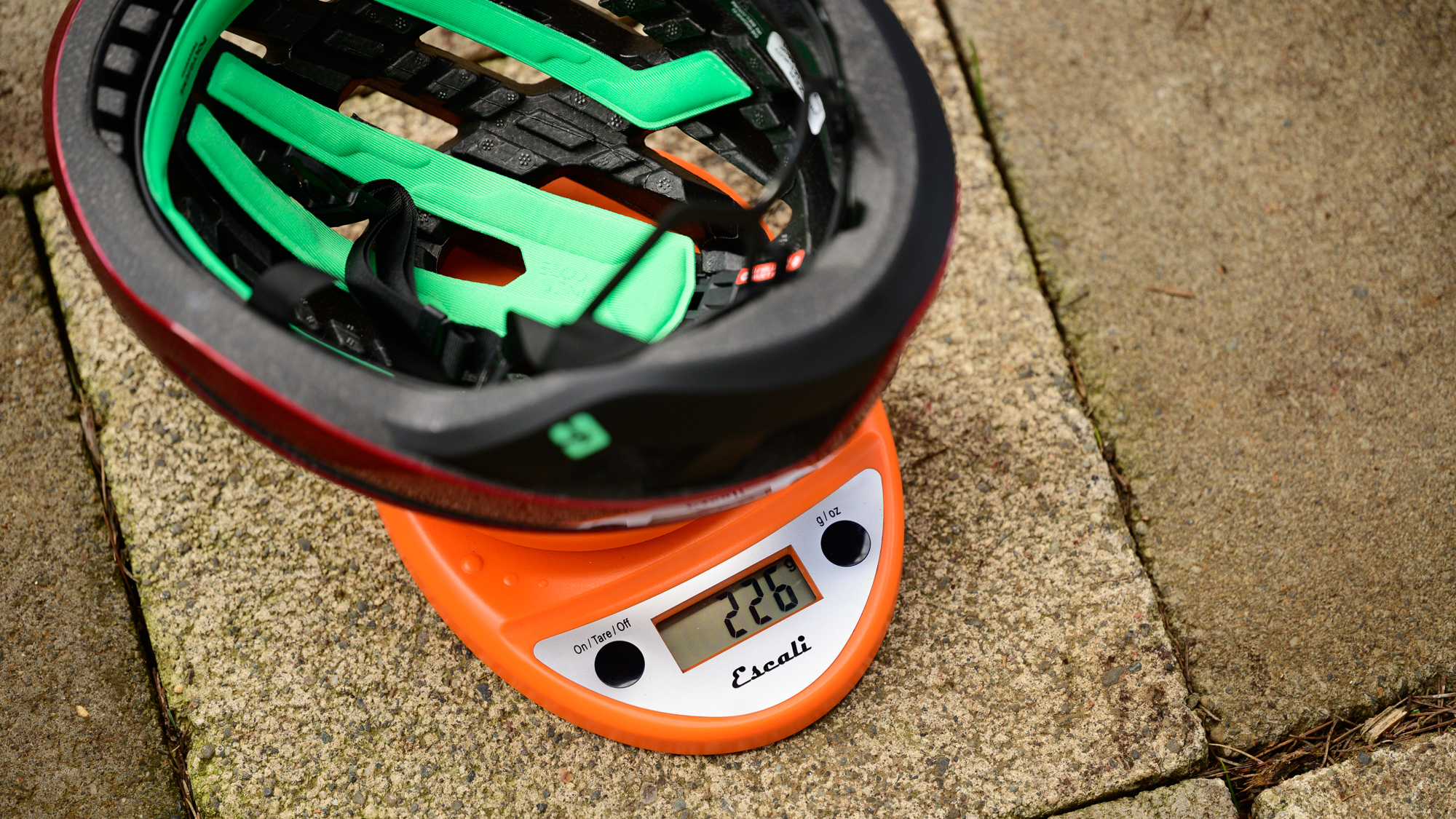
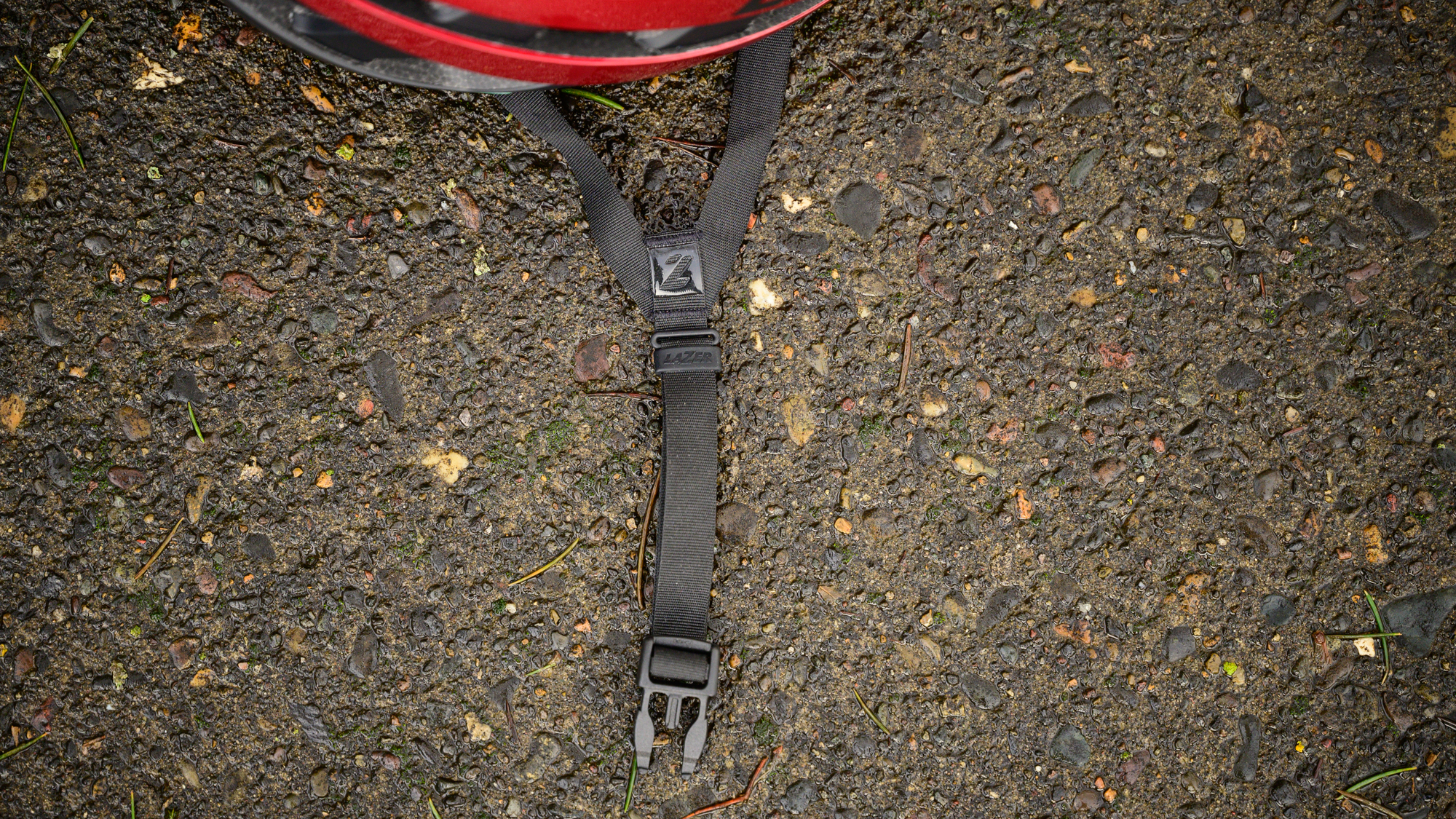
Verdict
I'm reviewing a lightweight and highly ventilated helmet in the winter. Unfortunately that means I can't tell you exactly how the sweat will drip down on your hottest rides. Fortunately, in this situation, the US is having a warm winter so I can tell you that the feeling of air flowing over your head is excellent. I've also done enough climbing in this helmet to know I appreciate the airflow behind the front brow pad. Switching back and forth between helmets though, it's not the airflow I notice.
The best feature, the feature I immediately notice, is the lightweight design. Right behind that is a fit I find to be just right. As I'm sitting here typing this I'm swapping helmets back and forth just to make sure. Sure enough, even while sitting in a comfortable chair, the weight is noticeable and it's a joy. On top of that, the straps sit right where I want them with no extra material to flap around and the rear cradle hugs the back of my head exactly like I want it to.
Despite the fact that I wish Lazer hadn't used Rollsys for this helmet, I'm a fan. This is the only helmet I've tested that seriously has me considering riding without an aero helmet this summer. If you already prefer a light and airy helmet, this is one of the best.

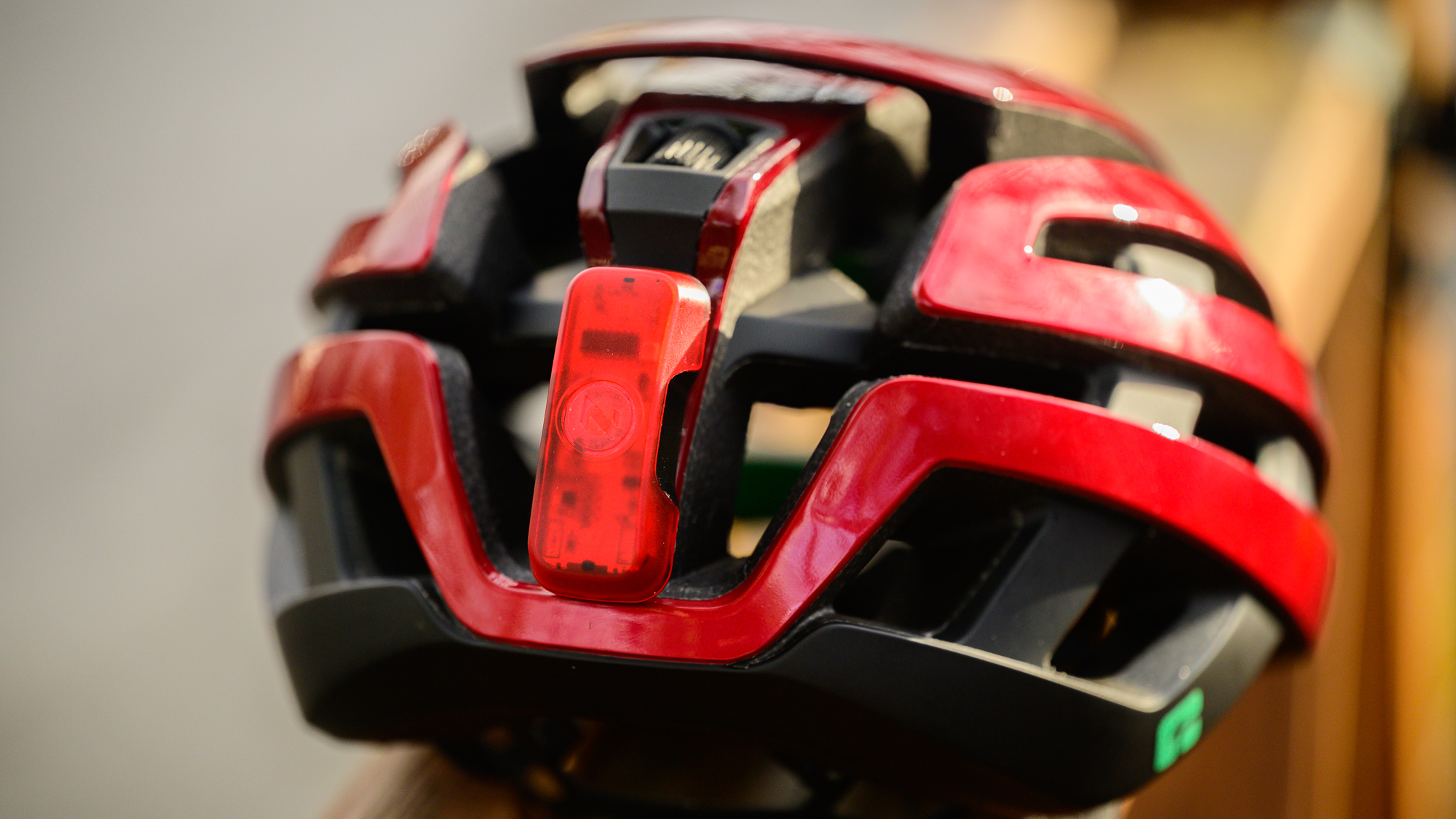
| Design and aesthetics | The metallic red is nice as is the overall look but from a design standpoint I’m not in love with Rollsys. | 7/10 |
| Comfort | It’s light and the fit is just perfect for me. | 10/10 |
| Ventilation | Very open and highly vented. | 10/10 |
| Safety | It’s too early to tell the exact Virginia Tech ranking but 5-star is as good as it gets and there is a great passive safety option (the rear light) as well. | 10/10 |
| Value | Not cheap, but a tad less expensive than competing top-shelf helmets. | 9/10 |
| Overall | Row 5 - Cell 1 | 94% |
Josh hails from the Pacific Northwest of the United States but would prefer riding through the desert than the rain. He will happily talk for hours about the minutiae of cycling tech but also has an understanding that most people just want things to work. He is a road cyclist at heart and doesn't care much if those roads are paved, dirt, or digital. Although he rarely races, if you ask him to ride from sunrise to sunset the answer will be yes. Height: 5'9" Weight: 140 lb. Rides: Salsa Warbird, Cannondale CAAD9, Enve Melee, Look 795 Blade RS, Priority Continuum Onyx
